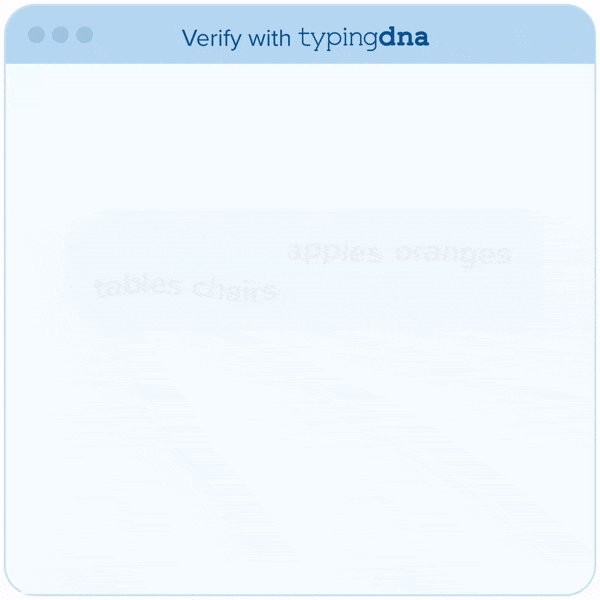Building compelling products has never been more challenging, especially with product managers getting busy understanding how to reduce customer churn. Expectations towards user-friendly products are rising, especially as the first digitally native generation becomes the largest population online.
With this in mind, product managers must design stellar user journeys focusing on offering the best user experience. The lifetime value plays a significant role, especially in SaaS models, and user churn is the first metric analyzed.
Customer churn derives from various touchpoints: some related to tangible and easy to monitor and predict factors; while others—though strong and impactful, are often unseen by product managers.
In this blog post, we will explore strategies on how to reduce customer churn, focusing on:
- Digital natives behavior and product expectations
- Why Gen Z and millennials are ready for a new breed of product experiences
- What is customer churn?
- Customer churn analysis
- Stellar user experience is key in increasing customer lifetime value
- Focus on offering the best user-experience
- UX data to consider when addressing churn
- Reduce early-stage customer churn with seamless onboarding
- Offer a seamless onboarding with user-centric authentication
- Reduce customer churn with user-centric authentication using TypingDNA Verify 2FA
Digital natives behavior and product expectations
Gen Z, born in the late ’90s, early 2000, is the first digitally native generation that has used technology and the Internet to learn, explore, communicate and thrive. This demographic accounts for 32% of the global population and holds a purchasing power of over $143 billion.
Specific to Gen Z is the cultural and societal background that has enabled it to grow up using lightning-fast Internet connections and supercomputers, while mobile-first and smart are just characteristics of the technology they have been using since early ages.

Bearing this in mind, millennials and Gen Z’s will likely be turned off by any product journey that doesn’t meet expectations such as fast, seamless, user-friendly, innate, or biometrics-based.
Gen Z’s and millennials are ready for a new breed of product experiences
Recent studies show how times have changed and the adoption of advanced technologies has no longer become an issue of user adoption. On the contrary, millennials and teens are preferring biometrics when it comes to authentication. A Visa survey revealed that 72% of respondents are interested in using biometrics to verify their identity or make payments.
The shift in consumer expectations is the one driving innovation as the majority of IT departments are actively evaluating biometrics, with 82% of respondents identifying at least one of the basic biometric approaches as a log-in solution.
What is customer churn?
Customer churn is the term used for the loss of clients or customers. Churn rates are very important since recurring customers are real business drivers. Remember, it costs between 5 and 25 times more to acquire a new customer than to retain an existing one.
Customer churn analysis
Before jumping into your next churn reducing strategy, classify your churn. Early stage churn is when users drop off in the first weeks after acquisition. Also, churn is differentiated by the intent:
- involuntary or passive churn
Relates to bad onboarding experiences, payment methods, an inefficient loyalty and retention program, nonexistent customer success departments, or simple inactivity related to unengaging content around your product.

- voluntary, active churn
This is when users choose to cancel their subscription or stop using your services because of issues during or failure to complete onboarding, difficulties with product adoption — such as trouble learning to use advanced features, or frustrations experienced with customer success representatives.
Stellar user experience is key in increasing customer lifetime value
Building a digital product narrative with a focus on user experience is key to business success. Product managers are always on the hunt for the latest technology trends users perceive as value-adding and time-saving.
Focus on offering the best user experience
Customer experience is defined as the user perception after interactions with a product or service. These touchpoints along the product journey are key in retaining or disengaging a user. Therefore, optimizing every interaction with/in your product is crucial to business success.
A cascade of benefits derives from a good user experience. Precisely, 73% of consumers translate a good user experience into brand loyalty, while a positive brand experience is perceived by 65% of users as more influential than advertising.

UX data to consider when designing churn reducing strategies
- Highly engaged customers buy 90% more frequently, spend 60% more per transaction, and have three times the annual value compared to other customers. (Rosetta)
- 66% of adults believe valuing their time is the most important thing a company can do to provide a good online customer experience. (Forrester)
- 74% of people will revisit your website if it’s user-friendly, and 50% of customers will stop visiting it if it’s not. (Think With Google)
- Experience-driven businesses see almost two times higher annual growth in customer retention, repeat purchase rates, and customer lifetime value than other organizations. (Forrester and Adobe)
Reduce early-stage customer churn with seamless onboarding
An effective onboarding process will facilitate good client retention by explaining your product benefits and how you can meet your users’ expectations and respond to their needs.
This first product encounter is crucial, as it familiarizes users with how to use your product and serves as a knowledge stage.
User experience deriving from the ease of use and intuitive journeys will have a major impact on the overall churn rates. Product managers must also focus on the authentication experience in this stage, which is a key part of the onboarding process. If you are not convinced about the importance of a great onboarding experience, remember:
Over 90% of customers feel that the companies they buy from could do better when onboarding new users or customers.
Offer a seamless onboarding with user-centric authentication
- Secure data and accounts
Data breaches have increased, seeing a 100% YoY growth, and users are paying more attention to how their data is handled. More and more users have been victims of cybersecurity incidents and, therefore, pay increased attention to account security and data protection. Minding the security expectations of your users is a first step in building trust, especially since nearly three-quarters of U.S. adults are aware of account takeovers.
- Facilitate in-app authentication
Avoid sending your users to external services for authentication. This way, users have an in-band reliable option requiring fewer actions. Pay attention to KYC and AML requirements if your company is required to comply with financial regulations. Also, keep in mind that 40-60% of software users will open an app once and never log in again. Making it as easy as possible to access your app is crucial in maintaining low churn rates.

- Make authentication fast and easy with typing biometrics
Easy-to-use products go hand in hand with intuitive authentication that eliminates user effort and friction. However, increased login time when using out of band factors such as SMS OTP or authenticator apps slows your users.
Instead, typing biometrics-based solutions can be used even during flights when GSM service is unavailable and doesn’t need any special sensors or devices — only their keyboard. Moreover, depending on the level of security, 2FA measures can be implemented, and typing biometrics can be coupled very well with SMS or email OTP. And, 72% of security leaders see biometrics as more user-friendly than passwords.
Reduce customer churn with user-centric authentication using TypingDNA Verify 2FA
TypingDNA Verify 2FA is a 2FA authentication solution replacing SMS OTP codes with better UX. By typing just 4 words, users can authenticate with minimal effort and friction while enhancing account security. TypingDNA Verify 2FA uses a new kind of biometrics that recognizes users by their unique typing patterns, powering more affordable, user-friendly authentication and behavioral analysis solutions.
How TypingDNA Verify 2FA can help reduce customer churn caused by bad UX
With TypingDNA Verify 2FA, the first user touchpoints are streamlined to create a seamless authentication process, making it easy to integrate into any user-centric journey.
Are you a product manager constantly looking to drive user adoption and increase retention? TypingDNA Verify 2FA will help you eliminate authentication-related churn so you can be sure you eliminate friction from the first user touchpoint.
You can now focus on more value-add product features and ensure a seamless authentication process.
With TypingDNA Verify 2FA you will:
Minimize user effort and friction at authentication
No second device, logging into email, or answering security questions. Users authenticate by typing a few words without leaving the browser or waiting to receive SMS OTP codes.
Use SMS codes as Root of Trust (RoT), NOT de facto authentication
High-frequency authentication needs are addressed by sending SMS 2FA codes only as a smart root of trust (RoT).

Implement state of the art authentication engine
TypingDNA Verify 2FA uses proprietary typing biometrics authentication technology coupled with the selection of key phrases, enabling higher matching accuracy on much shorter texts.
Increase account protection with 2FA
Make sure to avoid account takeover, as data breaches led to over 16 billion identities being stolen worldwide in 2020.
Keep SMS costs low
SMS codes will only be sent when the users enroll in the system, fail to verify or bypass our verification. This will keep SMS costs low, at an estimated 10%, or lower.




